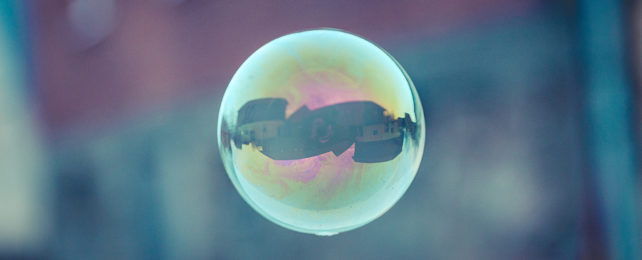When you stop and think about bubbles, you realize that they're everywhere: in the dishwasher, on the top of your beer, on the crests of waves, in the saliva between your teeth, and, of course, in bubble gun toys.
That means the physics of bubbles are important in all kinds of scenarios. With that in mind, researchers from the Université Paris-Saclay in France have made an intriguing discovery about the film surrounding bubbles.
This film can, in some cases, be up to 8°C (14.4°F) cooler than the environment around it, the researchers say. The findings build on previous investigations into how changes in temperature can trigger the thinning and evaporation of a liquid film.
"Although this effect is often considered in studies devoted to drop evaporation, to the best of our knowledge, the significance of cooling-induced evaporation is not mentioned in the literature on soap films and foams," write the researchers in their published paper.
To get a closer look at these soap films and foams – bubbles, essentially – the team put together a mixture made of washing up liquid, water, and glycerol, with variations in the final substance used to fine-tune the lifetime and evaporation rate of the bubbles.
These bubbles were tested in different temperature and humidity conditions. In some cases, the difference between the soap film and the ambient air was significant – maxing out at that 8°C level.
While it was already known that soap films lose liquid via evaporation in an attempt to release energy (just like we do when we sweat to cool down), it's been assumed that the temperature of these films matched the surrounding environment.
"Experimentally, we observed that the temperature first decreases and then increases until the ambient temperature is reached again," write the researchers.
"We reported that the magnitude of the cooling effect depends on both the relative humidity and the initial glycerol concentration, decreasing the values of these two parameters leading to stronger effects."
One of the ways that this research could be useful is in industrial processes where managing the stability of bubbles is vital. Temperature variations between bubble films and the outside world will affect those calculations.
The researchers say that the viscosity and the surface tension of soap films are two of the properties that are likely to be influenced by the temperature gap that they've found; indeed, soapy objects may not have a uniform thermal field all the way around.
This is the first study of its kind, though, and plenty more research is required before scientists can say just how the temperature of the film that makes up a bubble can be impacted.
"We propose a model describing the temperature drop of soap films after their formation that is in quantitative agreement with our experiments," write the researchers.
"We emphasize that this cooling effect is significant and must be carefully considered in future studies on the dynamics of soap films."
The research has been published in Physical Review Letters.
